#Liverpool echo
Explore tagged Tumblr posts
Text
A large fire was witnessed by residents of Liverpool Student Lettings accommodation in the early hours on January 27 2024. #LiverpoolEcho
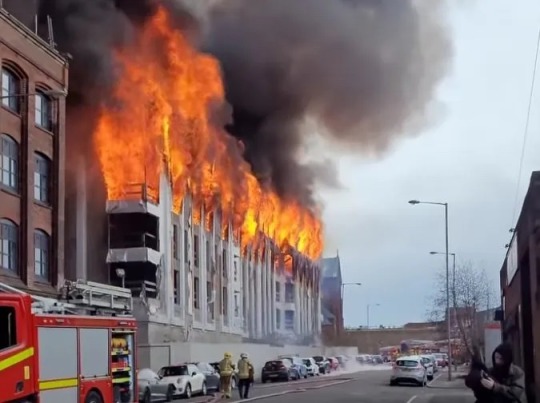
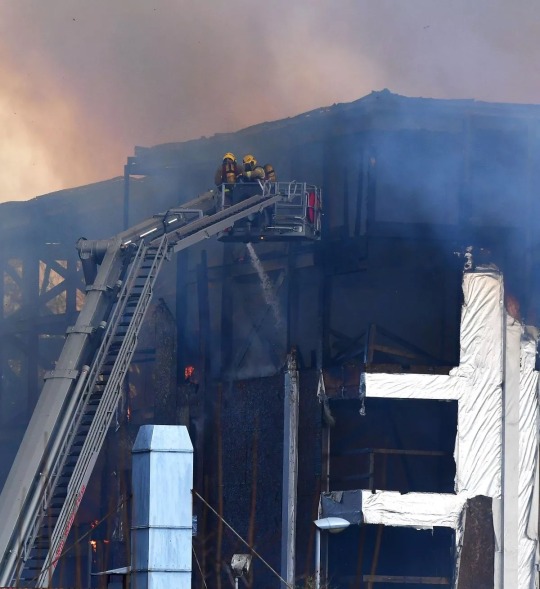
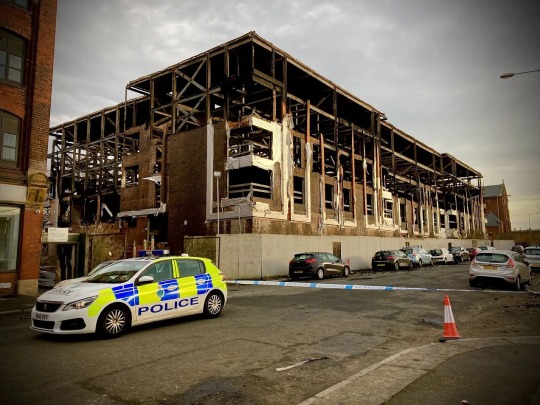
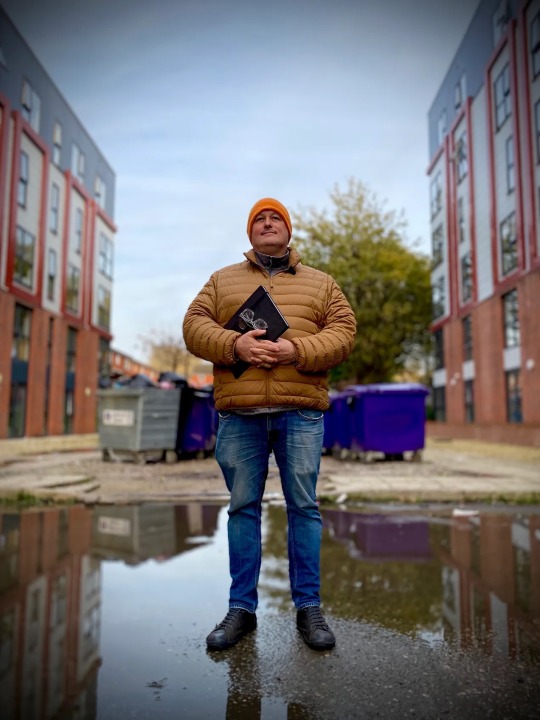
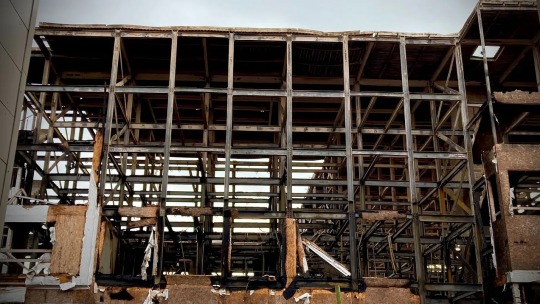
Village of the damned: Inside the Fox Street fire
Special investigation: For years, Matt O'Donoghue was told about major problems at a controversial development in Everton. Then the dire predictions came true. By Matt O’Donoghue.
��Block D is an inferno right now”, the first message reads. “Look what’s been torched.” More follow. “Not sure how other blocks are faring, they’ve been evacuated.” Some have video or photos attached. “Seen this. I feel sick.” One simply reads: “Fox Street’s final chapter.”
Block D at the stalled residential development of Fox Street Village sits on the edge of Everton. It is ablaze, and a lot of people want me to know. As the firefighters battle to hold back the flames that threaten to leap from block to block, frantic calls, dramatic videos, and heartbreaking messages light up my phone screen. Many of those getting in touch are people I met over the past five years I’ve been reporting on the sorry saga of Fox Street Village. They’re all saying the same thing: “It was only a matter of time.”
“Something like this had to happen,” says Chris Burridge, who owns one of the Fox Street Village apartments as he surveys the damage. It’s Sunday, January 28th and the day after the fire. Steel girders are bent and buckled like roller coaster tracks; the metal cools and creaks, and loose material flaps in the wind. “There’s been no decent perimeter fence for some time, even though we’ve been reporting incidents. We were lucky Block B didn’t go up. The flames and heat were ferocious. Mersey Fire saved those buildings.”
Lucky indeed. Fox Street Village was originally intended to be a 400 apartment complex spread across four blocks that were to be four or five stories tall. But Block D was never completed and has remained an unfinished shell for the past five years. The rest of the site, on the other hand, is home to a number of residents. Had the fire spread there, it would have been catastrophic. Letting agents are on-site to support tenants and help with the clean up, while insurance brokers and risk assessors mill about around them. Lifts, heating, and water are soon back on. Black debris litters the ground and the flat roofs of the adjacent blocks, while clumps of burnt insulation and wood continue to drift from above.
A team from Residence 365, the company that manages the Village’s interior communal areas, is helping to get residents back into their homes. “Unfortunately, as the fire started to take hold, many residents in Block A failed to evacuate,” says Carolyn Delaney, Residence 365’s managing director. “Police had to force their way into every apartment to make sure that building was clear and everyone was safe. Those doors and frames will have to be repaired.”
Outside, Block B’s walls and windows are warped from where it faced the fire. The cladding is buckled and wavy, like bad icing on an overbaked cake. Most of the glass is cracked and broken, and window frames have bowed out of shape. The fire breaks under the cladding will have activated and expanded. There will need to be a lot of work to put things right.
“The grounds and estate management company are nowhere”, says an exasperated Burridge. The last he was told, a company called Xenia Estates Limited were responsible for looking after the outside areas. “It’s outrageous. They’ve sent nobody down here to help or make things safe.”
Kevin Robertson-Hale is a local campaigner who set up the action group Everton Together. He was shopping at the ASDA on the Breck Road when he first saw the black clouds rising above his community. He knew straight away what was likely to be burning. “It’s just a miracle that nobody’s been hurt,” he says. Although Block D was not a finished building, homeless people have been sleeping there and using it as a shelter. “The way the place went up, someone asleep would never have got out.” Kevin is horrified by what has happened, but certainly not surprised. “We’ve been saying for years that something was going to happen. Either someone was going to fall off and break their neck, or it was going to go up in flames.”
Beneath the debris and behind the spectacular videos, the plumes of smoke billowing out and up from the bare bones of blazing Block D, are hundreds of stories of loss and despair. To properly understand what went wrong at Fox Street Village, to learn why things must be fixed, we have to understand why they were broken in the first place.
Between 1971 and 1991, Everton’s population dropped by 60% as the area’s fortunes and prospects charted exactly the decline of the British Empire. As Liverpool’s docks fell silent, the huge warehouses and the factories like Tate and Lyle and British American Tobacco were closed. Thousands of jobs disappeared and the communities that once relied upon those goods shipped from all corners of the Empire ceased to exist. An urgent need to improve the area’s housing conditions, the crumbling Victorian tenements, led to slum clearance and demolition on a massive scale. Those once solid communities were broken up with families moved out and housed in places like Kirby, Runcorn and Skelmersdale. It was the perfect storm; shops closed, tower blocks were pulled down and the city’s terminal decline was hastened by Margaret Thatcher’s vicious attempts to starve the upstart council controlled by Hatton’s Militant Tendency into surrender.
Fox Street Village followed the same controversial funding model that has dogged similar schemes across the city, known as ‘fractional sales’. Buyers — many based overseas — are enticed with the promise of a good rent and a solid investment in return for paying a large part of the sale price upfront. But as countless investors at other stalled sites in Liverpool have discovered to their detriment, there’s little or no protection should things go wrong.
When Fox Street Village Limited collapsed into administration, in 2019, it owed creditors £10 million and the city council nearly £700,000. The council told us that an invoice for over half a million pounds remains unpaid but that the building’s new owners will have to pick up that tab. Meanwhile, £6 million that investors had paid out for Block D was instead spent on a new fifth building the developers had added to their scheme. A search of records show creditors who had paid for apartments in Block D came from Birkenhead to Beijing and all points in between. With no money left to complete the job, and no cash to settle their bills, the steel frame and internal walls made of wood have remained open to the elements. The freehold to the site was sold to Manchester-based property investment company SGL1 Limited in 2020 for a reported £1.6 million. The site was split and a separate company run by the same two directors as SGL1 but called SGL3, took over the unfinished Block D. A series of complex court cases followed as buyers battled to gain control and finish the scheme. By 2021, the architect’s original drawings for Block D had been rebranded as “Park View” to be marketed at a new group of buyers. A one bed studio in the unfinished wood and steel shell was being advertised for £85,000. The Post is unsure how many people bought into this new scheme or whether their money is protected.
“I bought a three-bedroom apartment that cost £135,000, which was a really good deal. With hindsight, almost too good to be true. I’ve been firefighting one problem after another since day one.” November 8th, 2023 and I am rattling along the M62 with Chris Burridge. “It doesn’t look that good,” Chris says with detached stoicism and monumental understatement as Fox Street Village Block D comes into view. “It would be funny, if it wasn’t so costly and dangerous.” Chris is one of the apartment owners who have been battling over an £80,000 bill to install a transformer that would safely reconnect their electricity to the grid. The builders left a hot-wired connection into the mains, which Chris says the buyers only found out about after they’d secured the right to manage some of the site. It was just the latest in a long line of hidden surprises that have revealed themselves over the five years since tenants moved in. “The biggest block, Block D, is just a shell that should have been finished years ago,” Chris tells me as we pull up alongside what looks like a building entirely made of wood and wrapped in tin foil. “There should have been one large, shared entrance area, an underground car park for 170 vehicles, shops, a cinema room with communal laundry, and a bike store. All of those amenities were what made this site so attractive.”
Chris pauses to re-imagine what could have been, before reality kicks back in. “None of that exists. What we’ve actually got are great apartments next to the rat-infested fire trap of a mess that is Block D.”
By Matt O’Donoghue
“Block D is an inferno right now”, the first message reads. “Look what’s been torched.” More follow. “Not sure how other blocks are faring, they’ve been evacuated.” Some have video or photos attached. “Seen this. I feel sick.” One simply reads: “Fox Street’s final chapter.”
Block D at the stalled residential development of Fox Street Village sits on the edge of Everton. It is ablaze, and a lot of people want me to know. As the firefighters battle to hold back the flames that threaten to leap from block to block, frantic calls, dramatic videos, and heartbreaking messages light up my phone screen. Many of those getting in touch are people I met over the past five years I’ve been reporting on the sorry saga of Fox Street Village. They’re all saying the same thing: “It was only a matter of time.”
Chris Burridge on Fox Street. Photo: Matt O’Donoghue.
“Something like this had to happen,” says Chris Burridge, who owns one of the Fox Street Village apartments as he surveys the damage. It’s Sunday, January 28th and the day after the fire. Steel girders are bent and buckled like roller coaster tracks; the metal cools and creaks, and loose material flaps in the wind. “There’s been no decent perimeter fence for some time, even though we’ve been reporting incidents. We were lucky Block B didn’t go up. The flames and heat were ferocious. Mersey Fire saved those buildings.”
Lucky indeed. Fox Street Village was originally intended to be a 400 apartment complex spread across four blocks that were to be four or five stories tall. But Block D was never completed and has remained an unfinished shell for the past five years. The rest of the site, on the other hand, is home to a number of residents. Had the fire spread there, it would have been catastrophic. Letting agents are on-site to support tenants and help with the clean up, while insurance brokers and risk assessors mill about around them. Lifts, heating, and water are soon back on. Black debris litters the ground and the flat roofs of the adjacent blocks, while clumps of burnt insulation and wood continue to drift from above.
A team from Residence 365, the company that manages the Village’s interior communal areas, is helping to get residents back into their homes. “Unfortunately, as the fire started to take hold, many residents in Block A failed to evacuate,” says Carolyn Delaney, Residence 365’s managing director. “Police had to force their way into every apartment to make sure that building was clear and everyone was safe. Those doors and frames will have to be repaired.”
Outside, Block B’s walls and windows are warped from where it faced the fire. The cladding is buckled and wavy, like bad icing on an overbaked cake. Most of the glass is cracked and broken, and window frames have bowed out of shape. The fire breaks under the cladding will have activated and expanded. There will need to be a lot of work to put things right.
“The grounds and estate management company are nowhere”, says an exasperated Burridge. The last he was told, a company called Xenia Estates Limited were responsible for looking after the outside areas. “It’s outrageous. They’ve sent nobody down here to help or make things safe.”
Subscribe
Kevin Robertson-Hale is a local campaigner who set up the action group Everton Together. He was shopping at the ASDA on the Breck Road when he first saw the black clouds rising above his community. He knew straight away what was likely to be burning. “It’s just a miracle that nobody’s been hurt,” he says. Although Block D was not a finished building, homeless people have been sleeping there and using it as a shelter. “The way the place went up, someone asleep would never have got out.” Kevin is horrified by what has happened, but certainly not surprised. “We’ve been saying for years that something was going to happen. Either someone was going to fall off and break their neck, or it was going to go up in flames.”
Beneath the debris and behind the spectacular videos, the plumes of smoke billowing out and up from the bare bones of blazing Block D, are hundreds of stories of loss and despair. To properly understand what went wrong at Fox Street Village, to learn why things must be fixed, we have to understand why they were broken in the first place.
The building on Fox Street. Photo: Chris Burridge
Between 1971 and 1991, Everton’s population dropped by 60% as the area’s fortunes and prospects charted exactly the decline of the British Empire. As Liverpool’s docks fell silent, the huge warehouses and the factories like Tate and Lyle and British American Tobacco were closed. Thousands of jobs disappeared and the communities that once relied upon those goods shipped from all corners of the Empire ceased to exist. An urgent need to improve the area’s housing conditions, the crumbling Victorian tenements, led to slum clearance and demolition on a massive scale. Those once solid communities were broken up with families moved out and housed in places like Kirby, Runcorn and Skelmersdale. It was the perfect storm; shops closed, tower blocks were pulled down and the city’s terminal decline was hastened by Margaret Thatcher’s vicious attempts to starve the upstart council controlled by Hatton’s Militant Tendency into surrender.
Stand on the edge of Fox Street today and look towards the gleaming glass skyscrapers and modern penthouses and it’s obvious, the regeneration that has breathed new life into other parts of Liverpool in recent years seems to run out of steam as it creeps towards this area’s streets. According to the last census, Everton West — where Fox Street Village sits — has the third highest numbers of children on free school meals. This neighbourhood has some of the poorest health indicators, including the lowest life expectancy, across the whole of the city.
As Liverpool’s reputation grew as a great place to study, the last decade has seen residential housing for the influx of students become the city’s short-term planning solution and a way to kickstart Everton’s economy.
Fox Street Village followed the same controversial funding model that has dogged similar schemes across the city, known as ‘fractional sales’. Buyers — many based overseas — are enticed with the promise of a good rent and a solid investment in return for paying a large part of the sale price upfront. But as countless investors at other stalled sites in Liverpool have discovered to their detriment, there’s little or no protection should things go wrong.
When Fox Street Village Limited collapsed into administration, in 2019, it owed creditors £10 million and the city council nearly £700,000. The council told us that an invoice for over half a million pounds remains unpaid but that the building’s new owners will have to pick up that tab. Meanwhile, £6 million that investors had paid out for Block D was instead spent on a new fifth building the developers had added to their scheme. A search of records show creditors who had paid for apartments in Block D came from Birkenhead to Beijing and all points in between. With no money left to complete the job, and no cash to settle their bills, the steel frame and internal walls made of wood have remained open to the elements. The freehold to the site was sold to Manchester-based property investment company SGL1 Limited in 2020 for a reported £1.6 million. The site was split and a separate company run by the same two directors as SGL1 but called SGL3, took over the unfinished Block D. A series of complex court cases followed as buyers battled to gain control and finish the scheme. By 2021, the architect’s original drawings for Block D had been rebranded as “Park View” to be marketed at a new group of buyers. A one bed studio in the unfinished wood and steel shell was being advertised for £85,000. The Post is unsure how many people bought into this new scheme or whether their money is protected.
“I bought a three-bedroom apartment that cost £135,000, which was a really good deal. With hindsight, almost too good to be true. I’ve been firefighting one problem after another since day one.” November 8th, 2023 and I am rattling along the M62 with Chris Burridge. “It doesn’t look that good,” Chris says with detached stoicism and monumental understatement as Fox Street Village Block D comes into view. “It would be funny, if it wasn’t so costly and dangerous.” Chris is one of the apartment owners who have been battling over an £80,000 bill to install a transformer that would safely reconnect their electricity to the grid. The builders left a hot-wired connection into the mains, which Chris says the buyers only found out about after they’d secured the right to manage some of the site. It was just the latest in a long line of hidden surprises that have revealed themselves over the five years since tenants moved in. “The biggest block, Block D, is just a shell that should have been finished years ago,” Chris tells me as we pull up alongside what looks like a building entirely made of wood and wrapped in tin foil. “There should have been one large, shared entrance area, an underground car park for 170 vehicles, shops, a cinema room with communal laundry, and a bike store. All of those amenities were what made this site so attractive.”
Chris pauses to re-imagine what could have been, before reality kicks back in. “None of that exists. What we’ve actually got are great apartments next to the rat-infested fire trap of a mess that is Block D.”
Residents in this area have been complaining to me about the rats for as long as I’ve been investigating Fox Street Village. Back in April 2019, I broke my first story on the slow-motion car crash that has taken place here — months of work as part of an ongoing investigation for ITV’s Granada Reports. Back then, tenant Ross Lowey told me on camera: “We don’t feel safe. Every time we come back round that corner, we expect to see flames coming out of it.” He was far from alone in his unhappy prophecy.
Six months before that first ITV News report, in November 2018, I had been on a separate investigation into how developers duck out of paying the millions they owed to their cash-strapped council. It suddenly took an unexpected twist. While I ploughed through a mountain of conflicting planning documents that link to this case, a buyer tipped me off that their building was about to be the first on Merseyside to be shut down and issued with a Prohibition Notice. It was the last-ditch resort for a city council that had run out of ideas on how to make this site safe. “Serious construction issues will contribute to the spread of fire,” the Prohibition Notice reads. “Fire will spread quickly and possibly unnoticed.”
Put simply, the problems that the buyers had uncovered at their completed flats were so severe that they put lives at risk. While Block D remained unfinished, three of the four blocks that people had already moved into were so dangerous that everyone would be forced to move out — immediately. Judge Lloyd would later brand the project “disgraceful” as she fined the developers £3,120 for breaching planning conditions. She expressed sympathy for the residents and investors who had been affected. Planning inspectors said the development was “poorly finished” and failed to meet standards. Those problems have cost hundreds of thousands of pounds to put right.
3
By Matt O’Donoghue
“Block D is an inferno right now”, the first message reads. “Look what’s been torched.” More follow. “Not sure how other blocks are faring, they’ve been evacuated.” Some have video or photos attached. “Seen this. I feel sick.” One simply reads: “Fox Street’s final chapter.”
Block D at the stalled residential development of Fox Street Village sits on the edge of Everton. It is ablaze, and a lot of people want me to know. As the firefighters battle to hold back the flames that threaten to leap from block to block, frantic calls, dramatic videos, and heartbreaking messages light up my phone screen. Many of those getting in touch are people I met over the past five years I’ve been reporting on the sorry saga of Fox Street Village. They’re all saying the same thing: “It was only a matter of time.”
Chris Burridge on Fox Street. Photo: Matt O’Donoghue.
“Something like this had to happen,” says Chris Burridge, who owns one of the Fox Street Village apartments as he surveys the damage. It’s Sunday, January 28th and the day after the fire. Steel girders are bent and buckled like roller coaster tracks; the metal cools and creaks, and loose material flaps in the wind. “There’s been no decent perimeter fence for some time, even though we’ve been reporting incidents. We were lucky Block B didn’t go up. The flames and heat were ferocious. Mersey Fire saved those buildings.”
Lucky indeed. Fox Street Village was originally intended to be a 400 apartment complex spread across four blocks that were to be four or five stories tall. But Block D was never completed and has remained an unfinished shell for the past five years. The rest of the site, on the other hand, is home to a number of residents. Had the fire spread there, it would have been catastrophic. Letting agents are on-site to support tenants and help with the clean up, while insurance brokers and risk assessors mill about around them. Lifts, heating, and water are soon back on. Black debris litters the ground and the flat roofs of the adjacent blocks, while clumps of burnt insulation and wood continue to drift from above.
A team from Residence 365, the company that manages the Village’s interior communal areas, is helping to get residents back into their homes. “Unfortunately, as the fire started to take hold, many residents in Block A failed to evacuate,” says Carolyn Delaney, Residence 365’s managing director. “Police had to force their way into every apartment to make sure that building was clear and everyone was safe. Those doors and frames will have to be repaired.”
Outside, Block B’s walls and windows are warped from where it faced the fire. The cladding is buckled and wavy, like bad icing on an overbaked cake. Most of the glass is cracked and broken, and window frames have bowed out of shape. The fire breaks under the cladding will have activated and expanded. There will need to be a lot of work to put things right.
“The grounds and estate management company are nowhere”, says an exasperated Burridge. The last he was told, a company called Xenia Estates Limited were responsible for looking after the outside areas. “It’s outrageous. They’ve sent nobody down here to help or make things safe.”
Subscribe
Kevin Robertson-Hale is a local campaigner who set up the action group Everton Together. He was shopping at the ASDA on the Breck Road when he first saw the black clouds rising above his community. He knew straight away what was likely to be burning. “It’s just a miracle that nobody’s been hurt,” he says. Although Block D was not a finished building, homeless people have been sleeping there and using it as a shelter. “The way the place went up, someone asleep would never have got out.” Kevin is horrified by what has happened, but certainly not surprised. “We’ve been saying for years that something was going to happen. Either someone was going to fall off and break their neck, or it was going to go up in flames.”
Beneath the debris and behind the spectacular videos, the plumes of smoke billowing out and up from the bare bones of blazing Block D, are hundreds of stories of loss and despair. To properly understand what went wrong at Fox Street Village, to learn why things must be fixed, we have to understand why they were broken in the first place.
The building on Fox Street. Photo: Chris Burridge
Between 1971 and 1991, Everton’s population dropped by 60% as the area’s fortunes and prospects charted exactly the decline of the British Empire. As Liverpool’s docks fell silent, the huge warehouses and the factories like Tate and Lyle and British American Tobacco were closed. Thousands of jobs disappeared and the communities that once relied upon those goods shipped from all corners of the Empire ceased to exist. An urgent need to improve the area’s housing conditions, the crumbling Victorian tenements, led to slum clearance and demolition on a massive scale. Those once solid communities were broken up with families moved out and housed in places like Kirby, Runcorn and Skelmersdale. It was the perfect storm; shops closed, tower blocks were pulled down and the city’s terminal decline was hastened by Margaret Thatcher’s vicious attempts to starve the upstart council controlled by Hatton’s Militant Tendency into surrender.
Stand on the edge of Fox Street today and look towards the gleaming glass skyscrapers and modern penthouses and it’s obvious, the regeneration that has breathed new life into other parts of Liverpool in recent years seems to run out of steam as it creeps towards this area’s streets. According to the last census, Everton West — where Fox Street Village sits — has the third highest numbers of children on free school meals. This neighbourhood has some of the poorest health indicators, including the lowest life expectancy, across the whole of the city.
As Liverpool’s reputation grew as a great place to study, the last decade has seen residential housing for the influx of students become the city’s short-term planning solution and a way to kickstart Everton’s economy.
Fox Street Village followed the same controversial funding model that has dogged similar schemes across the city, known as ‘fractional sales’. Buyers — many based overseas — are enticed with the promise of a good rent and a solid investment in return for paying a large part of the sale price upfront. But as countless investors at other stalled sites in Liverpool have discovered to their detriment, there’s little or no protection should things go wrong.
When Fox Street Village Limited collapsed into administration, in 2019, it owed creditors £10 million and the city council nearly £700,000. The council told us that an invoice for over half a million pounds remains unpaid but that the building’s new owners will have to pick up that tab. Meanwhile, £6 million that investors had paid out for Block D was instead spent on a new fifth building the developers had added to their scheme. A search of records show creditors who had paid for apartments in Block D came from Birkenhead to Beijing and all points in between. With no money left to complete the job, and no cash to settle their bills, the steel frame and internal walls made of wood have remained open to the elements. The freehold to the site was sold to Manchester-based property investment company SGL1 Limited in 2020 for a reported £1.6 million. The site was split and a separate company run by the same two directors as SGL1 but called SGL3, took over the unfinished Block D. A series of complex court cases followed as buyers battled to gain control and finish the scheme. By 2021, the architect’s original drawings for Block D had been rebranded as “Park View” to be marketed at a new group of buyers. A one bed studio in the unfinished wood and steel shell was being advertised for £85,000. The Post is unsure how many people bought into this new scheme or whether their money is protected.
Fox Street after the fire. Photo: Chris Burridge
“I bought a three-bedroom apartment that cost £135,000, which was a really good deal. With hindsight, almost too good to be true. I’ve been firefighting one problem after another since day one.” November 8th, 2023 and I am rattling along the M62 with Chris Burridge. “It doesn’t look that good,” Chris says with detached stoicism and monumental understatement as Fox Street Village Block D comes into view. “It would be funny, if it wasn’t so costly and dangerous.” Chris is one of the apartment owners who have been battling over an £80,000 bill to install a transformer that would safely reconnect their electricity to the grid. The builders left a hot-wired connection into the mains, which Chris says the buyers only found out about after they’d secured the right to manage some of the site. It was just the latest in a long line of hidden surprises that have revealed themselves over the five years since tenants moved in. “The biggest block, Block D, is just a shell that should have been finished years ago,” Chris tells me as we pull up alongside what looks like a building entirely made of wood and wrapped in tin foil. “There should have been one large, shared entrance area, an underground car park for 170 vehicles, shops, a cinema room with communal laundry, and a bike store. All of those amenities were what made this site so attractive.”
Chris pauses to re-imagine what could have been, before reality kicks back in. “None of that exists. What we’ve actually got are great apartments next to the rat-infested fire trap of a mess that is Block D.”
The author Matt O’Donoghue on ITV. Photo: ITC/IMDb.
Residents in this area have been complaining to me about the rats for as long as I’ve been investigating Fox Street Village. Back in April 2019, I broke my first story on the slow-motion car crash that has taken place here — months of work as part of an ongoing investigation for ITV’s Granada Reports. Back then, tenant Ross Lowey told me on camera: “We don’t feel safe. Every time we come back round that corner, we expect to see flames coming out of it.” He was far from alone in his unhappy prophecy.
Six months before that first ITV News report, in November 2018, I had been on a separate investigation into how developers duck out of paying the millions they owed to their cash-strapped council. It suddenly took an unexpected twist. While I ploughed through a mountain of conflicting planning documents that link to this case, a buyer tipped me off that their building was about to be the first on Merseyside to be shut down and issued with a Prohibition Notice. It was the last-ditch resort for a city council that had run out of ideas on how to make this site safe. “Serious construction issues will contribute to the spread of fire,” the Prohibition Notice reads. “Fire will spread quickly and possibly unnoticed.”
Put simply, the problems that the buyers had uncovered at their completed flats were so severe that they put lives at risk. While Block D remained unfinished, three of the four blocks that people had already moved into were so dangerous that everyone would be forced to move out — immediately. Judge Lloyd would later brand the project “disgraceful” as she fined the developers £3,120 for breaching planning conditions. She expressed sympathy for the residents and investors who had been affected. Planning inspectors said the development was “poorly finished” and failed to meet standards. Those problems have cost hundreds of thousands of pounds to put right.
Subscribe
The council say that it was only after the buildings were largely constructed that it became apparent there was a failure to comply with conditions or the plans that had been passed. When the new owners submitted another application to make up for the missing car park, a fresh deal was struck for them to pay towards a cycle route and parking scheme. But planning approval was refused when no money was forthcoming.
Two companies were involved in the development of Fox Street Village: Linmari Construction Limited and Fox Street Village Limited. Both were run by company director, Gary Howard. In 2013, Howard was left as the sole director of Fox Street Student Halls Limited after his business partner, Lee Carroll, was forced to step down. Carroll had been found guilty of being a gang master under legislation brought in to tackle labour exploitation after an investigation into a recruitment company that Carroll ran with John Howard. Carroll was banned from being a company director for 12 years.
While nothing should be inferred from Gary Howard’s previous business history, six companies where he was a director and shareholder have a County Court Judgement against them. Just like Fox Street Village Limited, seven firms that Howard also once helped run have gone into administration owing money to creditors — two of which were also residential developments in Liverpool designed for student living. We’ve been unable to contact Mr Howard for a comment.
“The frameworks that are supposed to deliver safe buildings, protect their owners and keep those inside safe are not up to the job,” says Dr Len Gibbs, whose doctoral thesis focused on the problems with unfinished developments in the Liverpool area.
That regulatory framework — to get a building through from an architect’s drawings to the point of being occupied — can be roughly broken down into two stages: planning and building control. The first part is strictly controlled by rules and regulations that must be met and followed to the letter. A council department controls the planning process, and everything has to be approved by a committee after a rigorous assessment by trained officers. Once it passes and everybody agrees that the buildings are what the council and community needs, the proposals are said to have ‘gained consent’.
When developers have their planning consent, a building control team comes on board to oversee every step of the construction. Site inspectors visit to approve stages such as the foundations and drains, and the relevant paperwork is filed with the city council to confirm everything has progressed according to the plans that were submitted and in accordance with the required regulations. In theory, these two functions operate independently but in support of one another to deliver a building that doesn’t kill the people who move in.
That’s something of a simplification, but these are incredibly complex areas that require years of training to properly understand. Only when every step has been followed can a completion certificate be issued against the building and each individual apartment. These final pieces of paper confirm that everything is up to standard and legally ready for tenants to move in. If all these steps are followed correctly, then a development of buildings that were once judged to be a threat to the lives of residents should never be occupied. Yet they were occupied.
#liverpoolstudentlettings#Liverpool student letting#2024#fire#Liverpool echo#fox street studios#video#viralpost#liverpool#student#Liverpool students#January 2024#blaze#merseyside#Fox Street Village#Matt O'Donoghue#itv
8 notes
·
View notes
Text
Evertonians have 99 problems with the club right now but Jay-Z possibly investing ain’t one!
No idea if this has any truth in it, but new stadium, naming rights, sponsorship, gigs, all makes sense as a great investment.
#coyb#utft#nsno#efc#everton football club#Jay-Z#Jay-Z possible Everton FC investment#Liverpool Echo#Everton#Everton Investment
2 notes
·
View notes
Text

#liverpool rental#student village#liverpool#merseyside#student#travel#liverpool student#Liverpool Student Lettings#landlords#liverpool landlords#landlord#Dave Blackman#Liverpool university#university#England University#england#England uk#north west#north west england#liverpool student rentals#liverpool student rental#student studios#fox street studios#fox street#Fox Street Liverpool#Shez Blundell#tenant#Liverpool echo#fox street hotel#fox street hotel Liverpool
1 note
·
View note
Text
♫ Eleanor Rigby ♫ (Redux)
I have played this one twice, most recently in the fall of 2022, but it is always a favourite, and tonight I am in a time crunch (not to mention very exhausted) and so I’m reduxing it again! I promise something new tomorrow night! Paul McCartney wrote most of this song. He got the name “Eleanor” from actress Eleanor Bron, who appeared in the 1965 Beatles film Help!. “Rigby” came to him when he…

View On WordPress
0 notes
Text

Echo and Narcissus
Artist: John William Waterhouse (English, 1849-1917)
Date: 1903
Medium: Oil paint on canvas
Collection: National Museums Liverpool, Liverpool, United Kingdom
Description
Narcissus was the son of the river God Cephisus and nymph Lyripe. He was desired by both men and women because of his youthful beauty. One admirer was the young man Aminias. He professed his love for Narcissus but was rejected by him. Aminias later killed himself out of grief and anger, begging the gods to teach Narcissus a lesson. They devised the ultimate revenge.
One day soon after, Narcissus is said to have come across a pool in the woods. When he leant down to drink from it, he saw the most beautiful figure in the water’s reflection. He fell instantly in love with the youth, not realising it was his own reflection. Narcissus ultimately dies from sorrow on the banks of the pool, gazing longingly at his own reflection, heartbroken that his love cannot be returned by his reflection.
#painting#mythological scene#echo#narcissus#landscape#pool#woods#reflection#drapery#mythological characters#pre raphaelite brotherhood#english culture#pre raphaelite movement#oil on canvas#english art#artwork#fine art#oil painting#john william waterhouse#english painter#european art#20th century painting#national museums liverpool
39 notes
·
View notes
Text
Echo & The Bunnymen, Stars Are Stars, Liverpool, 1984
39 notes
·
View notes
Text

Mother and children making their way through a back alley, Liverpool Slums, 1962 - by Liverpool Echo/Mirrorpix
205 notes
·
View notes
Text
Paul will stay by John's side - a composition
»The original story about this was, I was reading about ›Death of John Lennon‹ in a newspaper. And one of the accounts was that the cop who took him to hospital after he’d been shot said ›Do you know who you are?‹ 'cause apparently that’s what they say to try and, you know, ›I'm Sally Burgess.‹ - ›Oh she’s not too badly off then.‹ But you know in John’s case it was particularly crazy 'cause, you know, it’s like a fan almost ›Do you know who you are?‹ ... and it always - oh my god - strangest remark that to me. I told Carl about this. So we, that's what the nurse now says to the girl in bed as if - in the same way - ›Do you know who you are?‹ That's what she says.«


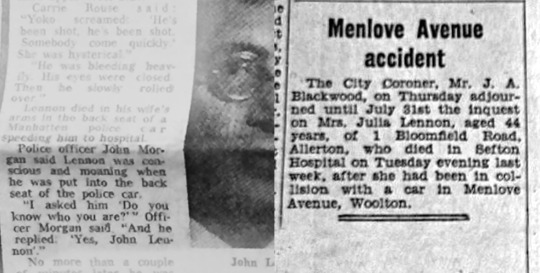

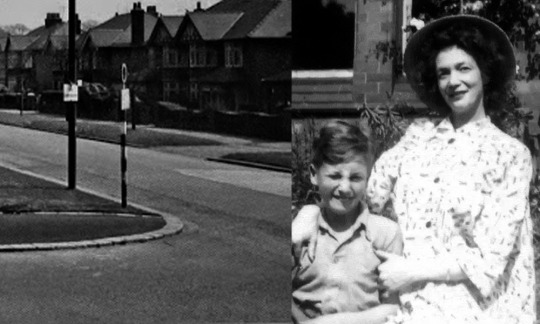
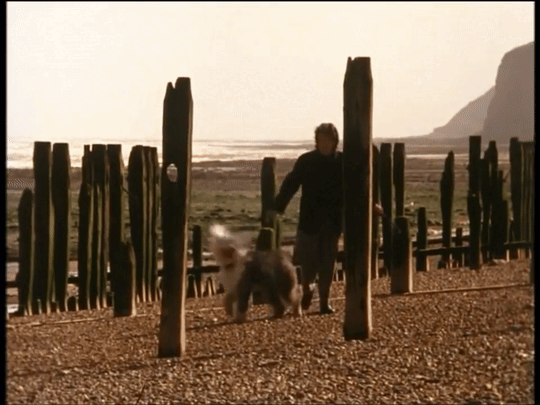
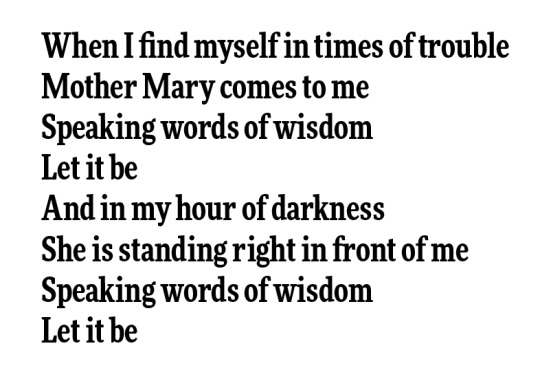
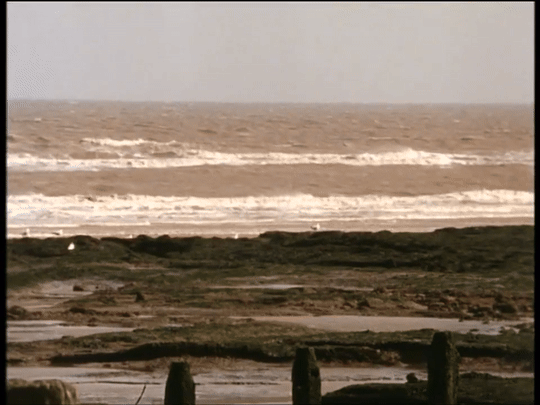
Tired of the hollow, the base, the untrue, Mother, O mother, my heart calls for you! Many a summer the grass has grown green, Blossomed and faded, our faces between: Yet, with strong yearning and passionate pain, Long I tonight for your presence again. Come from the silence so long and so deep;— Rock me to sleep, mother, – rock me to sleep! - the third stanza of Rock Me To Sleep by Elizabeth Akers Allen
#love transcends death#I tried something#I hope this transfers what I wanted to say well enough#couldn't really put it into words#got into my head a little bit#the newspaper clipping about john's death is from the Liverpool Echo#I wonder if that might be the actual one Paul was referencing bc the accounts in the various articles differ#paul mccartney#john lennon#the beatles#john and paul#mclennon#liverpool oratorio#carl davis#julia lennon#mary mccartney#mothers#sally burgess#elizabeth akers allen#web weaving
103 notes
·
View notes
Text

Echo and The Bunnymen - Crocodiles (Live) (1980) Ian McCulloch / Les Pattinson / Pete de Freitas / Will Sergeant / Joe Hill from: "Shine So Hard" (EP) "Crocodiles" (LP|CD | 2003 Reissue Bonus Track)
Post-Punk
Tumblr (left click = play) (224kbps)
Personnel: Ian McCulloch: Vocals Will Sergeant: Guitar Les Pattinson: Bass Pete de Freitas: Drums
Produced by Bill Drummond / Hugh Jones
Recorded: @ The Buxton Pavilion Gardens in Derbyshire, England UK on Jannuary 17, 1981
EP Released: on April 10, 1981 Korova / WEA Records
CD Reissue Released: on January 27, 2004 Rhino Records Sire Records
7 notes
·
View notes
Text
Look what I got!!!!!! All the stuff about the Liverpool vs Everton match!!!!!!! Really really cool

#Always been deeply fascinated by Liverpool so I've always wanted a copy of the Echo#As boulevardzeitungisch as it is haha
10 notes
·
View notes
Text

Dear Dan Friedkin,
It’s such a shame that FC Tom Tomsk went out of business (& we’re not allowed to do business with certain countries at the moment) a few years ago as they would have been a great club to send Everton’s disrespectful so-called-footballer Neal Maupay (currently on loan to Marseilles) to.
Our Gaffer Sean Dyche may not be upset by Neal’s disrespect for the Toffees but I think the bellend should be brought down a peg or two for his recent social media comments whilst still being paid by our beloved club.
I’m sure Neal Maupay would jump at the chance to play on loan for a club anywhere in Russia, China, Outer Mongolia, or North Korea.
Please do your best to ensure Neal Maupay has a wonderful & deserving end to his career with Everton Football Club. The ungrateful, disrespectful bellend is not welcome in Merseyside or anywhere in Great Britain.
Thank you for your time, thank you for buying Everton Football Club.
UTFT COYB NSNO
up the toffees, c’mon you blues, Everton forever, forever Everton.
Yours sincerely
Mr Martyn Randles (Lifelong Evertonian)

#coyb#utft#nsno#efc#everton football club#everton fc#everton#seamus coleman#liverpool echo#toffees#bbc sport#talksport#sky sports#neal maupay#Neal Maupay not welcome in Merseyside#send Neal Maupay to Siberia#send Neal Maupay to China#send Neal Maupay to North Korea#send Neal Maupay to Outter Mongolia#send Neal Maupay to Uranus#Neal Maupay’s a disrespectful bellend#FU Neal Maupay#FU Neal Maupay hope you never score again#dan friedkin#the friedkin group#friends of Roma Football club
0 notes
Text


📸: Simon Newbury
7 notes
·
View notes
Text

Echo & The Bunnymen 😊
Formed in Liverpool in 1978. The band included lead vocalist Ian McCulloch, guitarist Will Sergeant and Bassist Les Pattinson . In 1980 Pete De Freitas joined the band as the main drummer.
These are just a couple of their tracks, I'd say if you like the Cure then this band is for you, very similar in style 😁.
youtube
youtube
youtube
#echo and the bunnymen#bands#groups#youtube#music#band#group#musicians#indie music#80s bands#80s music#cool bands#nostalgia#songs#song#great songs#tunes#tracks#drums#guitar#guitars#gigs#gigging#british bands#liverpool bands#liverpool#cool music#cool songs#listen to this#concerts
4 notes
·
View notes
Text
Eurovision 2023: #28

28. GEORGIA Iru - “Echo” 29th place
youtube
Decade Ranking: 92/116 [Above Vladana, below Samanta Tina]
Great gown, beautiful gown;

Enough time has passed. Echo sucked. Yeah SORRY we all want underdog countries to do well and they are often undeservedly sidelined but come on. Georgia is NOT Slovenia. Their failures are always self-inflicted and not the result of jealousy, but of being too much themselves and not caring how they come across (aka “Dilja Syndrome”). I love them for that normally but not here. When is Georgia is too much Georgia? When it’s not enough Visionary Dream, too much fucking Iriao whateverstan, that’s what. Enter, “Echo” which... is a song. Kind of. I guess? It lasts for three minutes and she sings some words. Words that don’t make sense (funny how quickly this becomes a source of aggravation once you realize it was a deliberate stylistic choice to emulate “uwu quirkiness”), but as if anyone could pay attention to Iru with those obnoxious lights and camera cuts going on. So much bombast, so little impact.


The backing track was a clash where the prerecorded vocalists and persussionists tried to outnoise eachother, a vain vanity project for Iru to flex her voice against. Sadly the backing track won. Another thing that ground my gears at the time (enough to mention it five months later) were the Iru stans; Sure, ESC stans, you know them, we are them, you know how toxic they (we) can be sometimes. Nobody is innocent! But a line has to be drawn somewhere, and *I* draw mine way before reposting images depicting Iru crying in distress after her elimination, and using it to attack Blanka for “stealing” Iru’s spot. Respecting my idol’s feelings is nice but they rejected my ideal reality and it hurt my feelings, so GOODBYE respect!!! Espec when you consider Iru was upset in the first place because aforementioned braindead stanholes had spent months gaslighing her into believing she would have had an effortless path into the finale. Good fucking job!!!
But nobody can take away that she did wear a really beautiful gown. 🙂

10 notes
·
View notes
Text

Echo & The Bunnymen, Liverpool, 1980
72 notes
·
View notes
Text
Lyrics
She floats like a swan Grace on the water Lips like sugar Lips like sugar
Just when you think you've caught her She glides across the water She calls for you tonight To share this moonlight
You'll flow down her river She'll ask and you'll give her
Lips like sugar Sugar kisses Lips like sugar Sugar kisses
She knows what she knows I know what she's thinking Sugar kisses Sugar kisses
Just when you think she's yours She's flown to other shores To laugh at how you break And melt into this lake
You'll flow down her river But you'll never give her
Lips like sugar Sugar kisses Lips like sugar Sugar kisses
She'll be my mirror Reflect what I am Loser and winner The king of Siam
And my Siamese twin Alone in the river Mirror kisses Mirror kisses
Lips like sugar Sugar kisses Lips like sugar Sugar kisses
Lips like sugar Sugar kisses Lips like sugar Sugar kisses
Lips like sugar Sugar kisses Lips like sugar Sugar kisses
Songwriters: Leslie Thomas Pattinson / Ian Stephen McCulloch / William Sergeant / Pete De Freitas
#music#alternative music#English rock#british rock#80s music#Liverpool#Echo & the Bunnymen#Les Pattinson#Ian McCulloch#Will Sergeant#Pete de Freitas#Jake Drake-Brockman#Noel Burke#Damon Reece#Lips Like Sugar#song preview#sample track#lyrics#song lyrics
4 notes
·
View notes